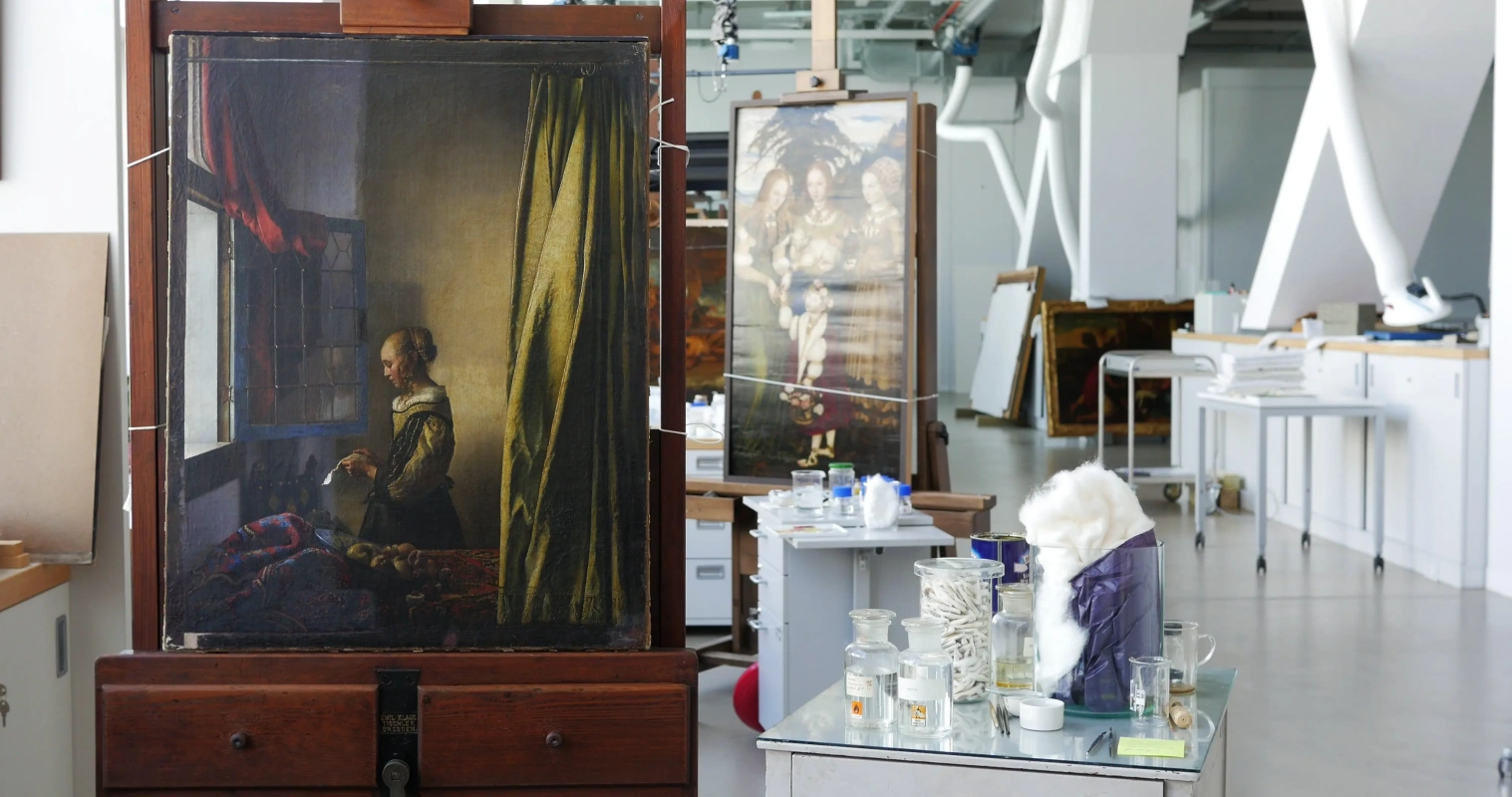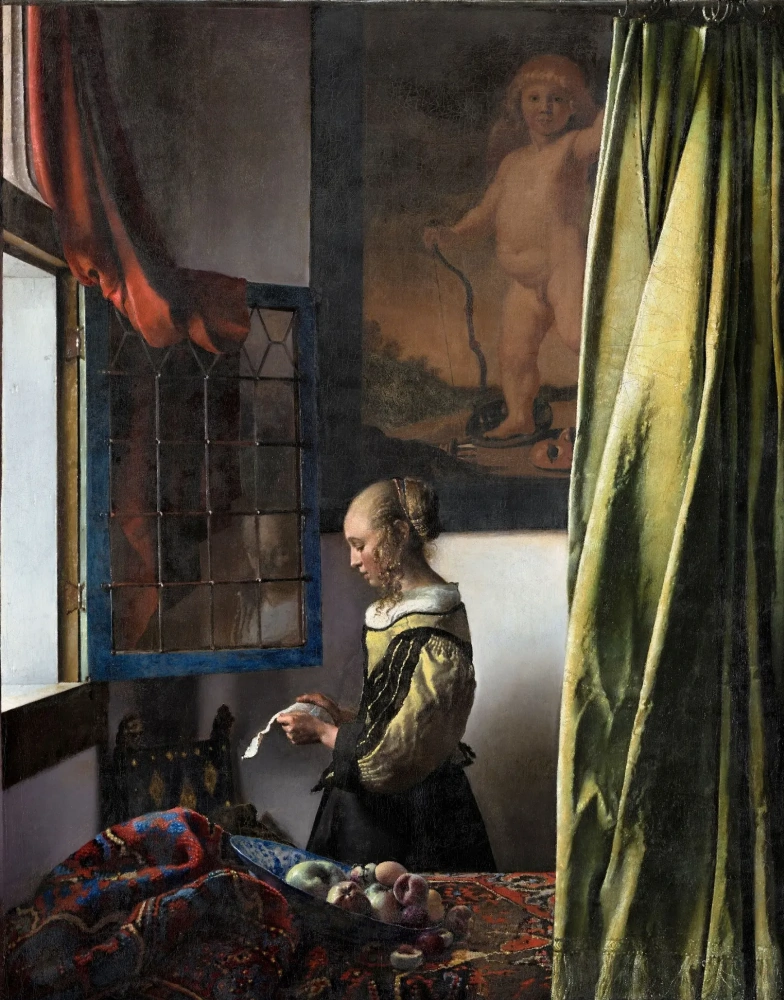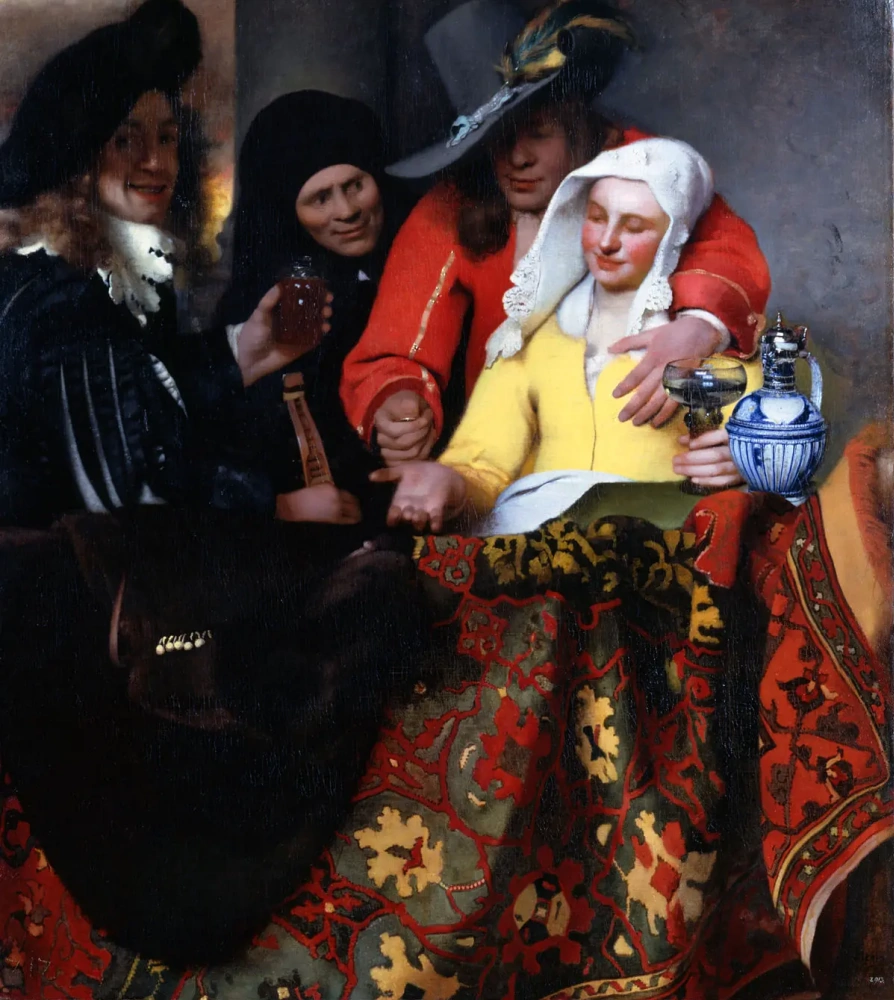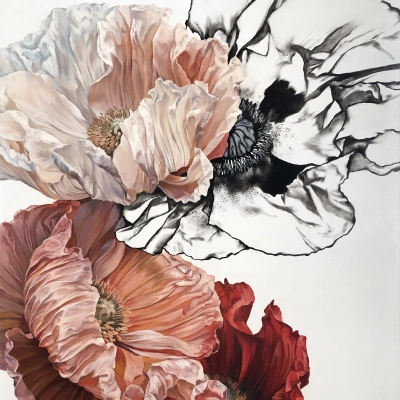
The extraordinary conservation project, which got underway in the spring of 2017, is made possible through the generous support of the Hata Foundation in Tokyo and the Staatliche Kunstsammlungen’s department for research and scientific cooperation.
Marking the beginning of the project was an international symposium with specialists from Amsterdam, Copenhagen, Vienna and Dresden, who examined and restored works by the artist in the past years.
The idea of including a curtain in the painting has numerous precedents and became very popular in the mid 17th century. The draperies hanging in the right foreground, are not an uncommon element for Vermeer, appearing in seven of his paintings. Even more common, the repoussoir appears in 25 of his works, with Girl Reading a Letter at an Open Window, one of three which feature a rug-covered table or balustrade between the figure and the viewer. It was the last painting in which Vermeer featured this device.

Photo: SKD / Wolfgang Kreische
"Girl Reading a Letter" and "Officer and Laughing Girl" represent the earliest known examples of the pointillé (not to be confused with pointillism), for which Vermeer became known. John Michael Montias in "Vermeer and His Milieu" (1991) points out the "tiny white globules" that can be seen in the brighter parts of both paintings, including the still life elements of both and the blond hair specifically in this work. This use of light may support speculation among art historians that Vermeer used a mechanical optical device, such as a double concave lens mounted in a camera obscura, to help him achieve realistic light patterns in his paintings.

Vermeer completed the painting in approximately 1657−59. In 1742, Augustus III of Poland, Elector of Saxony, purchased the painting under the mistaken belief that it had been painted by Rembrandt. There were great difficulties to establish which paintings were executed by Vermeer himself and which were not, mainly because of the problems with the signature recorded in the paintings.
They really have something very special in common, though having many differences at the same time. Rembrandt is darker, while Vermeer is brighter. But what they have in common is where they focus the light. They set up the light in a specific point in the picture, and not just any point, but the important one. It is were the eyes have to be driven, where we should focus our attention. A very good example is "Girl with a pearl earring". We can consider that there are three main points of light: the face itself, the lower lip and the earring. These important points are reflected with light.
In 1826, it was mis-attributed again, to Pieter de Hooch. However, in 1862 the right identification was made by French art critic Théophile Thoré-Bürger, thus the painting as one of the artist`s rare works was eventually attributed to Vermeer.
Left: Anton Raphael Mengs. August III the Saxon (c. 1800), pastel on paper. Gemäldegalerie Alte Meister, Dresden.
Based on materials from official site The Gemäldegalerie Alte Meister.

















